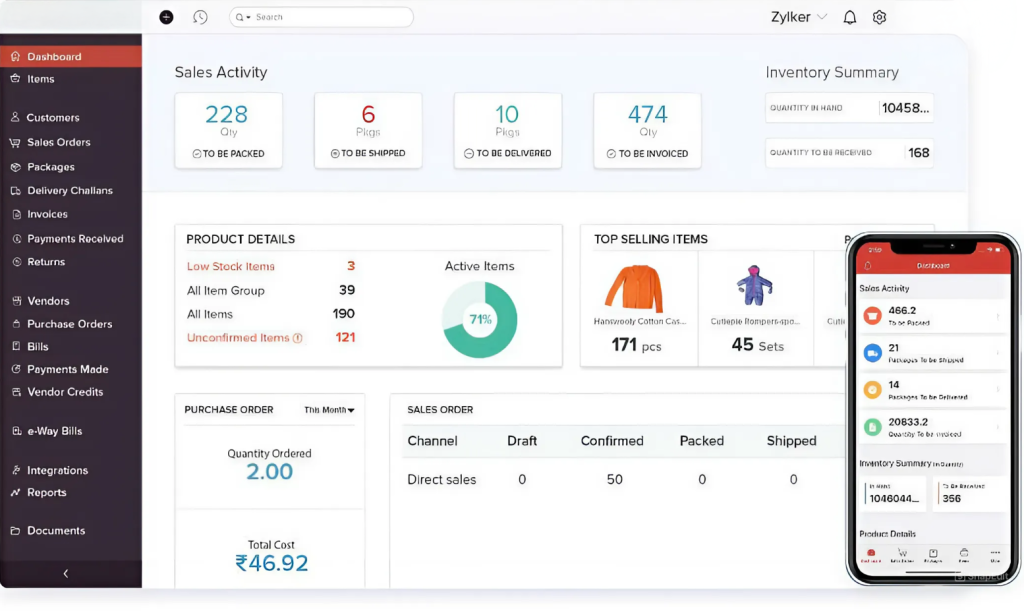Are you looking for solutions to optimize operational efficiency and increase profits for your business? Break through the limitations of manual management, optimize operations, and accelerate business growth with the comprehensive business management software – Kaizen SME. Contact us now for consultation and experience the software for free!
App Design for Household Services and Finding Hourly Helpers
What is Enterprise Resource Planning (ERP) Software?
Enterprise Resource Planning (ERP) software is an integrated software system designed to help businesses manage and organize daily business operations effectively. ERP is a comprehensive tool that includes various modules such as project management, financial management, human resource management, production management, sales management, and much more.
The goal of business management software is to optimize all elements within an organization, from personnel management to financial management and project management. By integrating data and workflows, ERP software helps create a robust and flexible working environment, thereby enhancing performance and increasing the competitiveness of the business.
In today’s digital age, using business management software is not just an option but a necessity for businesses to thrive in an increasingly competitive and complex market.
Key Features of ERP Business Management Software
Online Timekeeping
- Supports automatic timekeeping and tracking of employees’ working hours.
- Provides features for remote login and timekeeping, suitable for flexible or remote working models.
- Integrates tools such as fingerprint scanners, ID cards, or mobile applications to ensure accuracy and convenience.
- Tracks working time, breaks, late arrivals, and early departures of employees.
- Automatically calculates salaries based on configured formulas, including base salary, overtime pay, allowances, insurance, personal income tax, etc.
- Provides detailed reports on employee timekeeping, helping management easily monitor and evaluate work efficiency.
Job and Project Management
- Create and track projects, jobs, and tasks assigned to employees.
- Plan projects, assign tasks, monitor progress, and evaluate implementation effectiveness.
- Track the progress of each project and task, allowing management to easily control and adjust when necessary.
- Provide online communication and collaboration tools to help team members exchange information, update work progress, and resolve issues easily.
- Generate detailed reports on project progress and performance, helping management assess results and make appropriate decisions.
Human Resource Management
- Store personal information, qualifications, skills, and experience of employees.
- Integrate recruitment processes and employee performance evaluations.
- Create and manage employee profiles, including salary, benefits, and welfare.
- Manage work schedules, leave requests, and HR policies.
- Provide tools to assess work performance based on KPIs, helping management evaluate employee competence and effectiveness.
- Plan training, monitor the training process, and assess training effectiveness.
- Manage payroll, salary calculations, and employee compensation.
Internal Business Administration
- Create and manage internal documents, processes, and policies.
- Integrate a notification system for internal communication between teams and departments.
- Monitor and manage fixed assets and current assets of the business.
- Track quantities, inventory in/out, and the value of goods in stock.
Customer Management and CRM
- Store customer information and transaction history, interactions, and notes.
- Create and manage marketing and sales activities.
- Monitor the sales process, manage orders, and recover debts.
- Provide customer service support tools such as email marketing, SMS messaging, and customer service hotlines.
- Analyze data on purchasing behavior and customer preferences to develop effective marketing strategies.
Financial and Accounting Management
- Create and manage expense, income, and financial transaction records.
- Integrate cash flow management and debt management systems.
- Manage accounting, taxes, and financial reporting. Process payments and automate accounting.
- Support tax declarations and payments in accordance with regulations.
- Provide detailed and transparent information about the financial situation of the business.
Real-time Statistical Reporting
- Create and export statistical reports on business operations, customizable based on requirements.
- Provide real-time information on key metrics such as sales, profits, and project progress.
- Integrate data analysis tools to generate forecasts and trends.

 English
English
